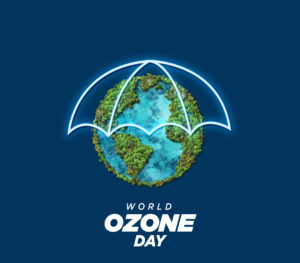On March 4, 1933 newly elected President of the United States Franklin Delano Roosevelt made this famous declaration during his inaugural address: “…let me assert my firm belief that the only thing we have to fear is fear itself; nameless, unreasoning, unjustified terror.” FDR had his faults, as all leaders do, but uttering those words to a nation terrified by hopelessness and dread was a shining moment in his career.
On February 20, 2023 The Pipeline's editor Michael Walsh wrote this: “…democracy does not "die in darkness." It dies in chaos, brought on by fear, engendered by uncertainty and birthed of instability…” While I’m not willing to suggest that Walsh's eloquence should move him to seek elected office, or to be regularly photographed grinning with a fancy cigarette holder clenched in his teeth, I do believe that his declaration is every bit as profound as Roosevelt’s was ninety years prior.
In 1933 Americans were terrified by enormous economic upheaval few citizens understood. The disaster seemed unsolvable to most. In 2023 Americans are terrified by rapid advances in technologies and the sciences that – to many – seem to create problems as equally dangerous and apparently unsolvable as the Great Depression did in 1933.

FDR: Fear itself.
This writer is not an expert on all technologies and all of science. We’ve advanced way to far for anyone to lay claim to being a modern-day Da Vinci. That said, this writer is an expert on the complex intersection of chemistry, environmental protection, risk evaluation, and public policy. In that world Walsh’s description holds true: all rational parts of that equation are dying in chaos, brought on by fear, engendered by uncertainty, and birthed of instability. Moreover, I firmly believe that is the case in many, likely most, other areas of scientific discipline when they intersect with public policy or popular trends. In this era of mass, instantaneous communication, nothing is guaranteed to attract more attention than communicating fear.
Consider how many people routinely purchase indoor “air purifiers” that are designed to remove air contaminants from indoor air by generating the most widely regulated air pollutant in America: ozone. Ozone is basically oxygen on steroids; three oxygen atoms bonded together rather than the usual two. The extra atom gives ozone some unique properties, among which is its ability to react with a variety of air contaminants and remove them from the air we breathe. So far so good, except for the fact that ozone is itself a highly regulated air contaminant. Reducing ozone in the air we breathe has been the focus of EPA and environmental group efforts for over fifty years.
The EPA has reduced the National Ambient Air Quality Standard for ozone three times since the original Clean Air Act was promulgated. Presidents Clinton, Bush, and Obama all reduced the ozone standard, largely in response to environmental group claims that the preceding standard was not sufficiently protective of human health. There are mountains of regulations designed to reduced ozone formation. Vehicles have catalytic convertors largely to reduce ozone formation. If you live in an urban area, you pay for low vapor pressure gasoline in the summer months to reduce ozone formation. The push to reduce ozone formation affects the price we pay for electricity, natural gas, consumer goods, and a host of other areas.
Liberals have toyed with the ludicrous idea of banning natural gas-fired appliances, but none seems moved to grab this incredibly low-hanging fruit: Americans are routinely purchasing air-pollution generators in the name of improving air quality! It’s the sort of exploitation of fear and ignorance that would have amazed even Orwell.

Beware the O-Zone.
Ozone-generating air purifiers are just one example of the ignorance and hypocrisy that infects issues involving science and technology. Fire up your favorite search engine and try out the following queries: “manganese pollution,” “lead toxicity,” and “poly-aromatic hydrocarbons cancer risk.” You’ll find some dry, technically-accurate but boring as hell to read discussions involving those keywords published by government agencies and academics, and you’ll also find articles in which “experts” warn readers about the extreme danger associated with exposure to those compounds.
But how significant are these supposed dangers? Let’s start with manganese. Do you or a loved one take a multi-vitamin on a regular basis? Take a look at the ingredient list. Chances are you’ll find manganese listed among the minerals included.
This may give you pause. There are plenty of stories out there that describe manganese as a dangerous neuro-toxin. There are plenty of community leaders, political types, and environmental activists wringing their hands about the fate of the poor, innocent children exposed to this poison. So what the heck is it doing in your vitamins?
The answer is that manganese is an important and necessary micro-nutrient. Your body doesn’t need a lot of it, but it needs some of it. Chemicals are neither inherently toxic or non-toxic. The dose makes the poison, so it’s the amount one is exposed to and the route of exposure that ultimately matter. Good luck finding any member of the modern intelligentsia who understands, much less can explain, that simple fact.
Most everyone is aware of the dangers associated with ingesting lead. Less well known is that virtually every kitchen in the United States contains bowls and utensils that contain lead. For lead is a minor, but measurable, component of many grades of stainless steel—and whose kitchen doesn’t have a stainless item in it?
Does the amount of lead contained in stainless steel or how it is held within the lattice structure of the metal present any concerns about lead exposure? Not really, but don’t expect the fear-mongers to figure that out, even if they cared to do so.

Safety first.
And Poly Aromatic Hydrocarbons (PAH)? There’s plenty of literature talking about how these potentially toxic and/or carcinogenic compounds can be formed during the combustion of coal, oil or natural gas. True, so far as that goes, but in very tiny amounts that will expose the average citizen to concentrations so low they are hardly of concern.
On the other hand, the smoke from your campfire, the cloud coming from your charcoal grill and any smoked food you consume will contain much more PAH compounds than anything a power plant will expose you to. That doesn’t keep me from enjoying smoked and barbecue foods, but then I’m not a hypocrite.
If you’re reading this piece, most experts agree that you are probably alive. Other experts tell us that sometime in the future you will cease to be alive. In between then and now, do yourself a favor: enjoy life. One of the ways you can enjoy it best is by tuning out the sad, ignorant masters of exploitation and propaganda who dream up ways to try to control your behavior by exploiting your natural tendency to exercise extreme caution when facing fear itself.
Article tags: Clean Air Act, Energy, Environment, environmentalism, FDR, green energy, Green Movement, Michael Walsh, natural gas, ozone, Virtue Signalling
The Narrative preys on guilt and feeds us unending fear. Is it any wonder we wander confused.
Fear itself paralyzes reason, accelerating confusion and the resultant irrational actions torque the guilt and fear.
We are dancers, jerking to the resultant mismatch between reality and the Narrative, beat on, Tarentel.
===============
Cooking fires in Asia -- huge source of air pollution. I said cooking fires.
Our Air and Water was much more polluted in the so called Good Old Days of the Horse and Buggy Horse Manure and no real sewage systems and flies and disease to. Its just today we have a whole bunch of Nit-Wits wanting to control our everyday Lives
I was thinking about buying an air purifier. Now I'm not. I'll save money. Thanks Rich.
We might yet wind up fighting a war with Mangania over this, the outcome of which would be seriously in doubt. The Manganese are well-armed and motivated.